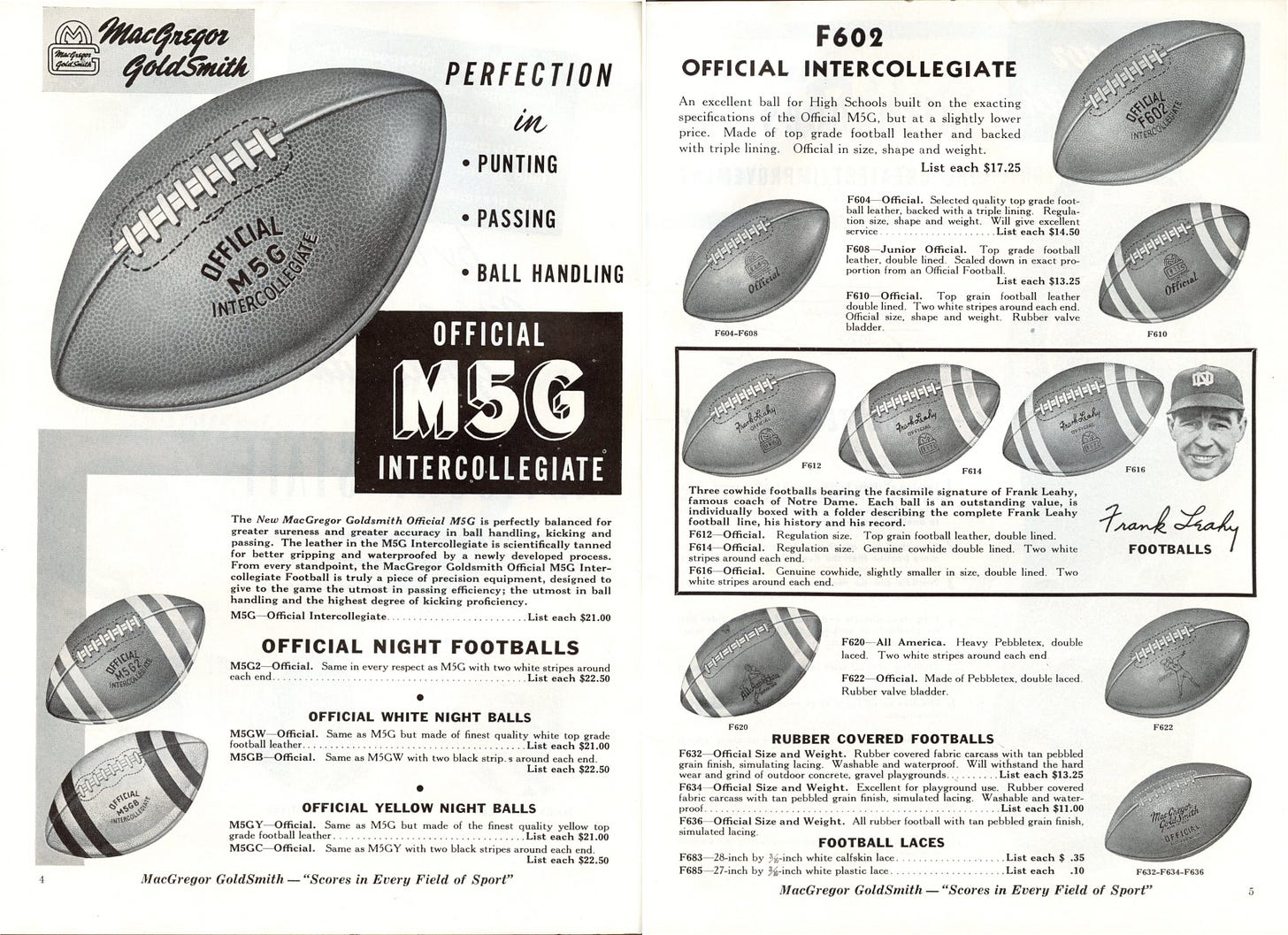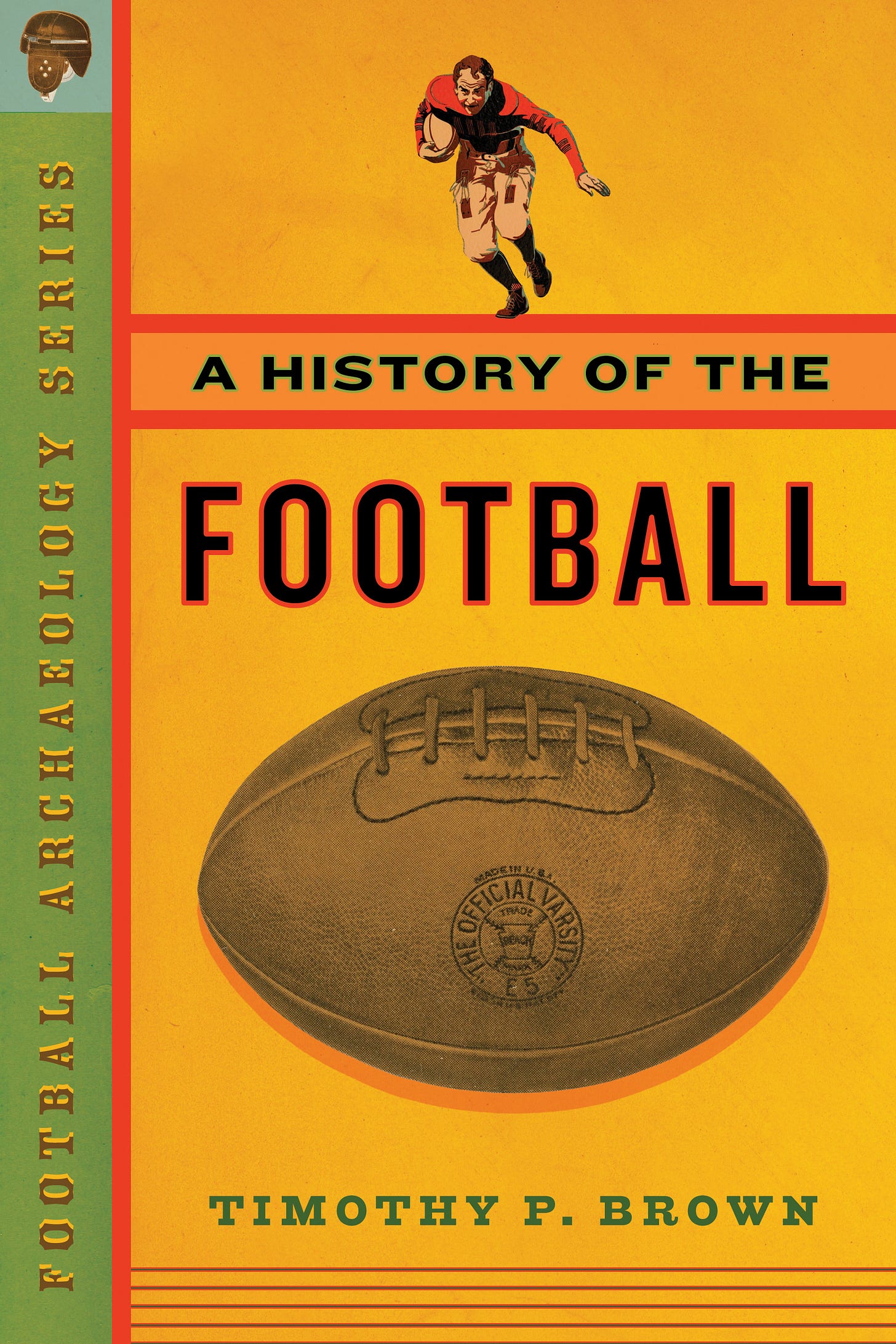Today's Tidbit... The Wonderful World of Striped Footballs in 1951
A little over a week ago, I wrote about the ring cleat, a football equipment innovation that did not pan out, after coming across a listing for the shoes in the 1951 MacGregor Goldsmith Fall and Winter catalog. The same catalog contained another fun surprise, a two-page spread featuring numerous double-striped football models, even a few rubber balls.
The NFL does not stripe its footballs today, though they once did. High school, college, and Canadian footballs have one-inch white stripes on either side of the ball. The rulebook for each of those organizations specify the number, size, and location of stripes, but those specifications did not exist in striping's early days, when stripes were experimental or innovative.
Footballs were first striped in the mid-1930s to help players and fans see the white footballs with black stripes during night games on the poorly lit fields of the era. Stripes also helped prevent teams wearing brown, tan, or white uniforms from benefiting from the camouflage effect of their gear. Teams wearing brown or tan uniforms had an unfair advantage holding a naturally-tanned ball, while the trend toward white uniforms aided those carrying a white ball.
So, teams painted black stripes on white balls and white stripes on brown balls until the manufacturers started doing so at the factory by the early 1940s.

As teams and manufacturers added stripes, everyone had them encircling either end of the ball and not running its length. Some positioned the stripes closer to the center of the ball, overlapping the laces, while others placed single or double stripes toward the tips.
Besides the white footballs, there were yellow balls, and the post-WWII era gave serious consideration to rubber footballs, which wore better and many found easier to handle in the rain.
So, by the early 1950s, there were numerous variations on what footballs looked like. The following two pages from the 1951 MacGregor Goldsmith Fall and Winter catalog show more double striped models than any catalog I have encountered before. They had brown, white, and yellow balls, available unadorned or with two stripes. They also had rubber balls, but did not offer a ball with the single stripe. MacGregor Goldsmith apparently believed footballs should have two stripes or none at all.
Unfortunately for MacGregor GoldSmith and other purveyors of double-striped footballs, the NFHS adopted a rule for 1952 that eliminated white and yellow balls, choosing instead the traditional brown ball with a white stripe positioned one inch from each tip. Since high schools bought most of the country’s footballs, everyone immediately settled on their standard for the number and position of the stripes.
There have been a few changes since then. The NFL stopped using the striped ball in 1976. Meanwhile, the NCAA permitted the brown ball with one stripe in 1965, and required it in 1975, while removing the stripes from the ball's bottom two panels due to quarterbacks’ complaints that their thumbs slipped on the paint.
That, my friends, is how footballs earned their stripes.
If you enjoyed this post, consider A History of the Football, which covers its evolution from early rugby to the present.






Always a clever closing remark from Tim! Love it.
The double stripe footballs are so interesting looking, but not sure if I would want one getting thrown to me. I might be hypnotized by the time it got to me lol